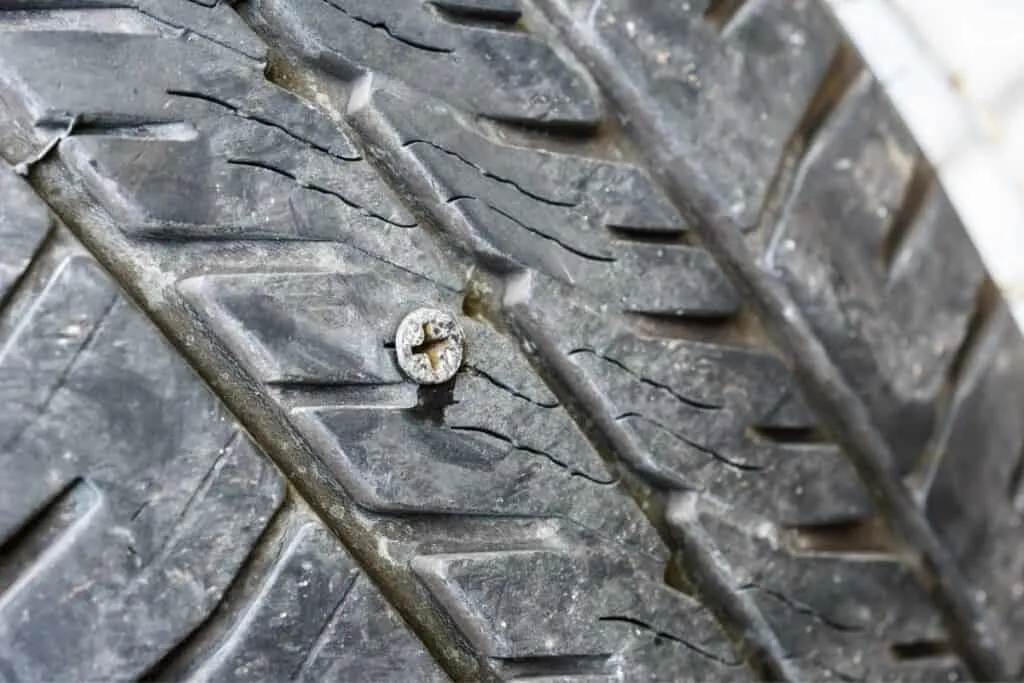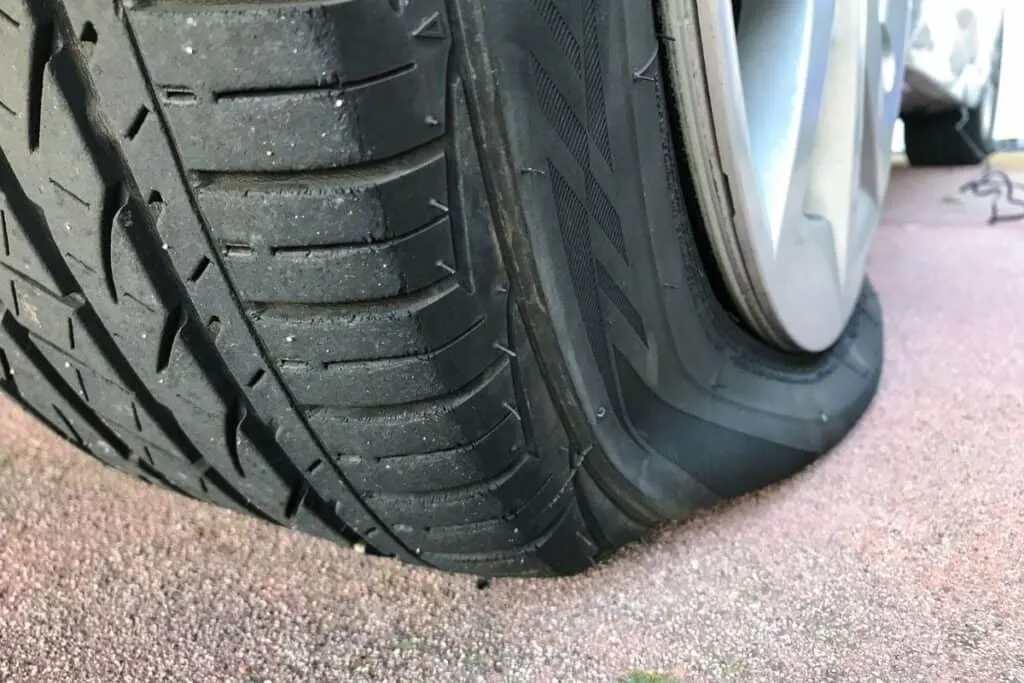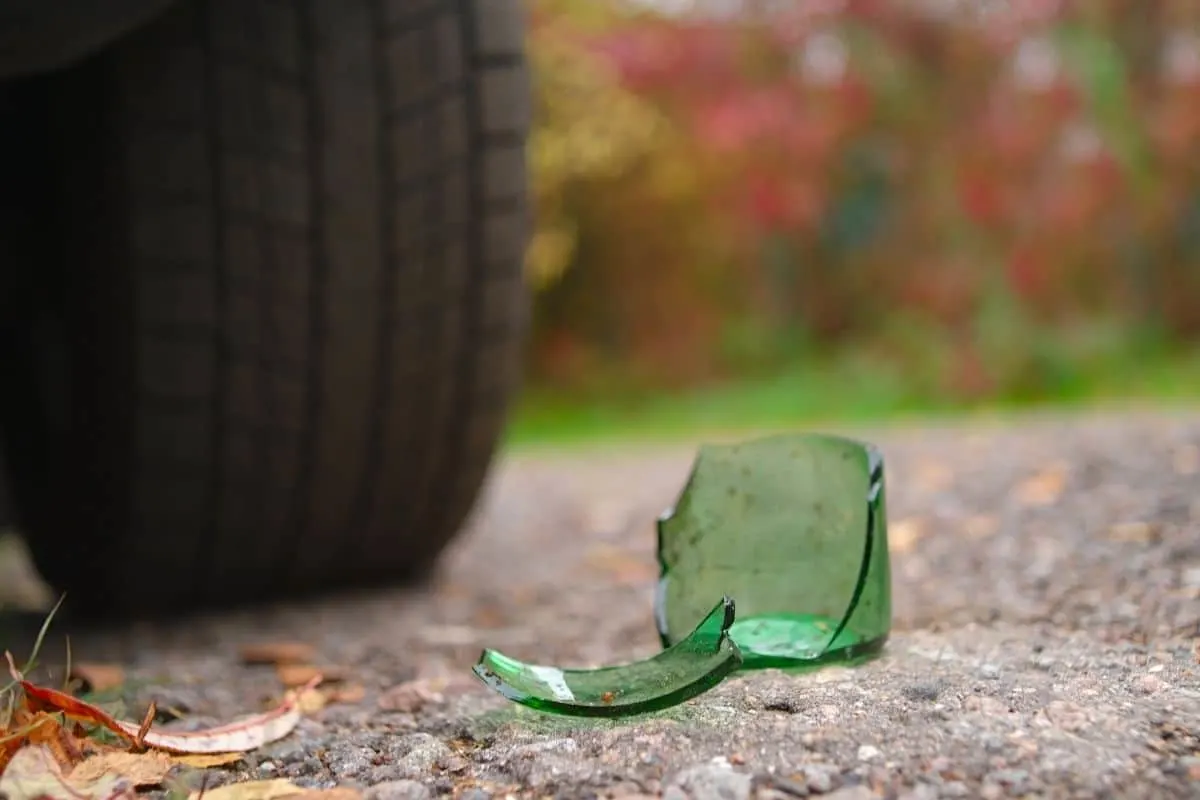If you’re like me, you’ve at least once in your life been in your car just after an accident scene up ahead. You wait patiently for your turn to pull through, and someone finally waves you through.
You move ahead slowly trying to not hit anyone or anything, but you also get
worried that you’re moving over broken glass!
Car tires can safely run over broken glass in most scenarios thanks to the steel belt technology employed by most major tire manufacturers. Although the likelihood of a flat tire is low, broken glass should be avoided when possible.
With that in mind, let’s take a deeper look at how tires are protected from glass and other objects on the road that could result in a flat tire.
Will I Get a Flat Tire if I Run Over Glass?
The answer is generally yes, although it’s not always a sure bet. While you’ll probably be safe doing it, and I’ve done so in circumstances where I had no choice, but things can always happen. There are things working both for and against you.
But, I have good news!
Most major tire brands that make tires for various passenger vehicles use what is known as steel belt technology underneath the rubber tread. They’ve been doing that since the middle of the 1970s, and this makes it seriously unlikely that pieces of glass could puncture passenger vehicle tires to the point of a major blowout happening.
I’ve never been through a major blowout, but I’ve seen what they do to vehicles at high speeds on highways. I don’t want to ever go through something like that myself, and I doubt that you want to either.
I’ve learned you can never say never. Because of the technology in reputable tires, there’s very little chance that highway glass would seriously damage a passenger vehicle tire that’s in good condition.
There’s the problem. A normal tire in good condition isn’t always what you have. Cheap tires, low-caliber brands, and tires not in great condition might actually have issues because of glass. Don’t let your tires get too old, worn down, or abused.

What Can Puncture Tires?
In terms of tire punctures, glass isn’t your biggest concern. I hate to tell you this, but it’s nails. When a nail is run over, the head might shift in position or even bounce a bit.
Nails that get run over act unpredictably!
This is in large part because they get bent easily, so puncturing the thing running them over is easy to do. Compounding matters is the fact that they can also puncture the vehicle behind the one running them over.
If I’m in front of you, I might run over some nails and make them fling up. If you’re the car right behind me, you’d drive right over the sharp points and get punctured.
That’s just an example because I’d never intentionally do that to you!
Unfortunately, you can do it to yourself. Front tires can kick up nails that puncture the rear tires. Many tire technicians will tell you that the rear tires are what usually get punctured by nails.
Nails aren’t the only thing you have to worry about though. I personally get concerned by other things besides glass and nails, too:
- Construction Debris
This can be steel parts, metal sheets, and even pieces of wood. Any of them have the potential to puncture or hurt your tires or mine.
- Sharp Rocks
This is more likely to happen if you are off-road, but they can also be dragged on roads where pavement intersects unpaved roads.
Dump trucks might also lose some of their rocks as they travel the lanes they share with us. Those minimum-distance signs on the back of them are no joke.
- Bolts and Screws
These aren’t as bad as nails if you hold them in your hand, but at a high speed on a freeway, they’re just as damaging to your tires.
Whether they fall off of vehicles or just wind up in the traffic for a million other reasons, you can run these over anywhere at any hour.

How to Check for a Punctured Tire
You never want to deal with a puncture, but there are some potential warning signs that you should look for one.
Warning Signs You Need to Look for a Puncture
If your car feels wobbly or the wheel shudders when you drive, then that can be an indication that one of your tires isn’t in sync with the rest of them.
I noticed a puncture once after I started having difficulty steering my vehicle. It turned out to be a slow puncture, and the tire was deflating slowly over a period of many days. Not all punctures are dramatic highway blowouts, but they’re still dangerous.
If you find your car drifting left or right, almost as if it’s getting pulled in either direction, then this might be a sign of medium-grade tire deflation. Even if it’s not immediately dangerous, this makes steering harder, wears down your tires faster, and lowers your gas mileage.
A sudden swerve left or right is usually a blowout. A tire got punctured or damaged so hard that it burst suddenly.
Looking for the Puncture
If your tire blows out, then there might not be anything left to look for, much less a point. However, in the event of a minor puncture or slow leak, you can possibly find the problem and have it patched.
First, make sure your tire is at full air pressure. Many passenger vehicles will tell you the tire pressure right from the dashboard, so you might not even have to do this.
Second, visually inspect your tire for punctures, cuts, damage, holes, or objects protruding from the tread. You will have to either jack up the vehicle or move your car at least once to see the whole tire.
Third, check for air. Listen for hissing noises with your ear in as many places as you can. Also, hold your palms around the tire to feel for any air that might be coming out.
If you want to get really advanced, you can put soapy water around the tire to cover it with bubbles. That can be a visual cue where a leak is. Likewise, you can remove the tire and submerge it in water to see where the air bubbles show up to indicate the leak.
Personally, I just make sure I have roadside assistance and can call someone whenever I need them.
Driving Afterwards
If you have a full blowout, your car shouldn’t move without help. Either put a replacement tire on right then and there or have someone come tow you.
Should you call a tow truck, be sure the blown-out tire won’t still be on the pavement. Either that end of your vehicle needs to be lifted, or you get a tow truck with a platform for the whole car.
If you find a more minor leak and your passenger vehicle is still capable of driving safely for now, then I advise you to not wait long. Get it to your mechanic or local tire store as soon as you can. The more miles you put on a leaking tire, the sooner it will wear down.
Patches and repairs have come a long way in recent years, but only if you find the problem and deal with it soon enough.
In Conclusion
Sooner or later, you’ll drive over broken glass whether you like it or not. Your tires will probably be fine, but it’s not always a sure thing.
Knowing what can puncture tires and how to check for punctures helps you care for your tires so you can keep driving and keep driving safely.
